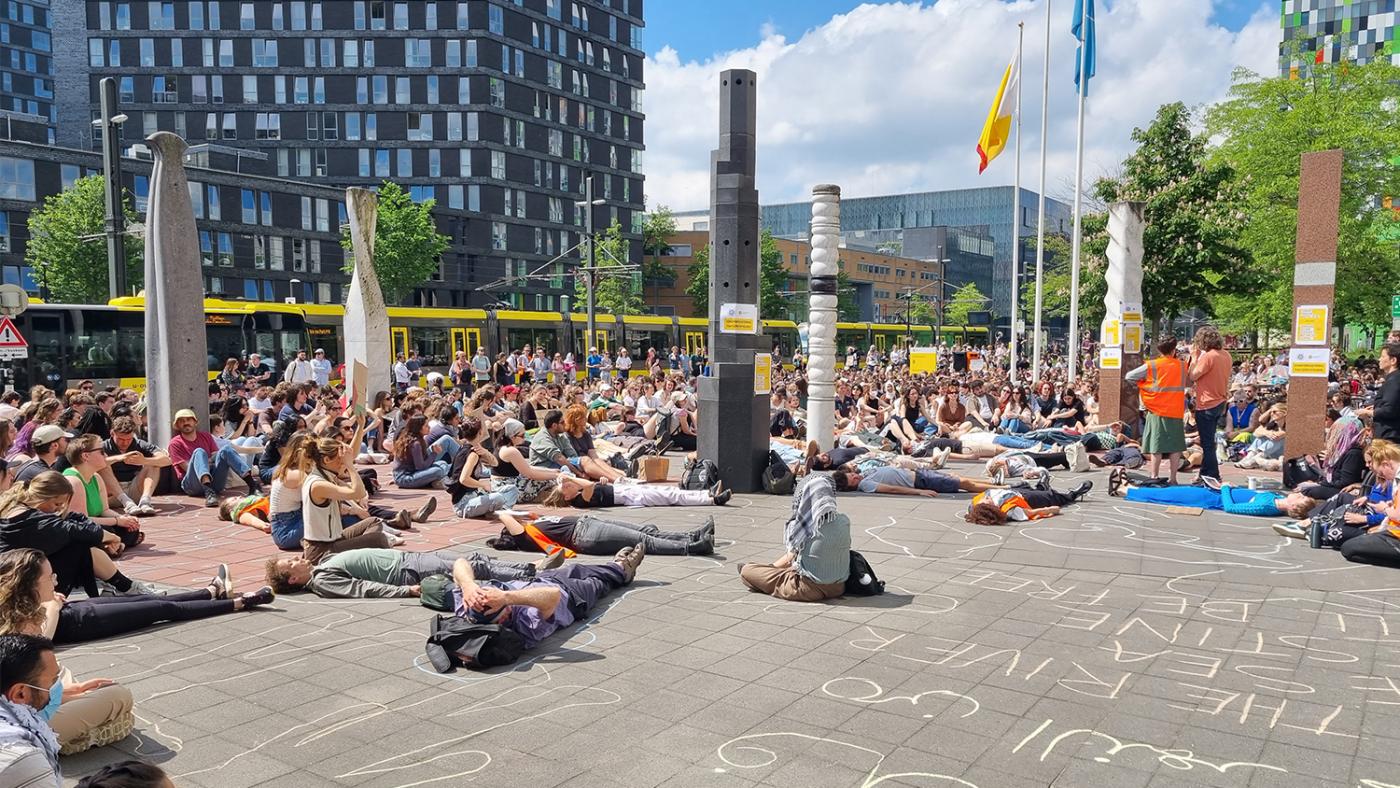Dutch universities publish joint house rules
New protest directive contains few red lines

Should administrators negotiate with masked protesters or not? Are protestors allowed to occupy a building overnight? The new joint directive issued by Dutch higher education institutions (document in Dutch, Ed.) gives executive boards considerable leeway on such matters.
In their directive, the administrators strike a calm tone. It starts by saying: “Knowledge and critical voices are the beating heart of higher education institutions. This includes debates about important issues and also the opportunity to protest.” A little further on, it continues: “Protesting at universities and universities of applied sciences is therefore allowed.”
As long as the protesters comply with the institution’s code of conduct, that is. Universities and universities of applied sciences feel “that everyone (including students, staff and visitors) should feel safe on campus”.
No red line
However, putting this into practice is not as simple as it might sound. While occupying a building is not allowed and classes must be allowed to continue, the institutions do not draw a red line. They stop short of saying that if you occupy a building, riot police will be sent in to force you out.
All the directive says is that executive boards “may file a police report”. Staying overnight in the institution’s buildings and premises is not allowed “without permission”, which leaves open the possibility of permission being granted. On Monday, for example, Maastricht University did exactly that.
Only once an incident has been reported to the authorities can the mayor, police and public prosecutor decide to send in riot police. This explains why riot police were brought in at the University of Amsterdam last Monday night and later that same week, but were nowhere to be seen on Tuesday.
Aim
The most strongly worded provision states: “Protests in places and spaces that clearly pose a danger to persons, animals and the environment (e.g. as in the case of laboratories) will not be tolerated.”
A stipulation at the end of the document reads: “Universities and universities of applied sciences always report offences such as threatening behaviour, use of force, vandalism or acts of violence in public places.” But offences can be reported after the fact and so may not result in the site being cleared by force.
Scarves
The directive also mentions the use of scarves and masks by some protesters to hide their faces. “By law, it is not permitted to wear items of clothing that cover the face (e.g. full-face helmet, balaclava, mask, face veil)”, the educational institutions point out. This statement refers to an existing law that covers conduct in education, healthcare, public transport and government buildings.
But what happens if protesters wear them anyway? In that case, they will be “asked” to leave the location or remove their face covering. It also says that university administrators will not negotiate with anyone who is not willing to show their face.
Organisers
In their directive, the administrators shift some of the responsibility to the protest organisers. They will no longer settle for the organisers’ assurances that the protests are peaceful and that only a small minority commit acts of vandalism. Instead, the organisers are "asked” to ensure that no criminal offences are committed.
These include “violence, threats, discrimination, vandalism and disturbing the peace”, the institutions explain. “More generally, they also cover intimidating behaviour, anonymous expressions or other disorderly conduct.”